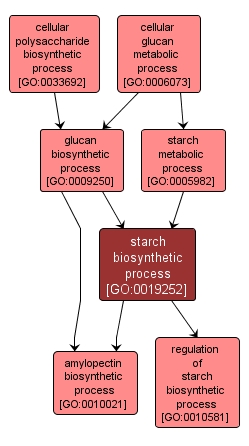GO TERM SUMMARY
|
| Name: |
starch biosynthetic process |
| Acc: |
GO:0019252 |
| Aspect: |
Biological Process |
| Desc: |
The chemical reactions and pathways resulting in the formation of starch, the most important reserve polysaccharide in plants. |
Synonyms:
- starch formation
- starch biosynthesis
- starch synthesis
- starch anabolism
|
|

|
INTERACTIVE GO GRAPH
|














